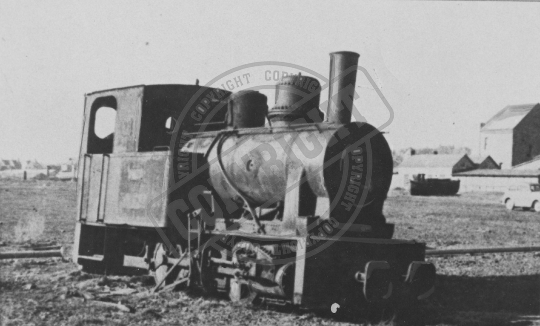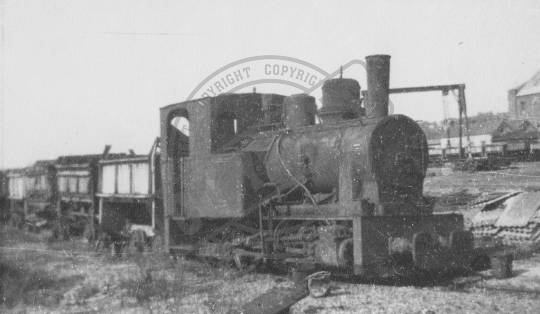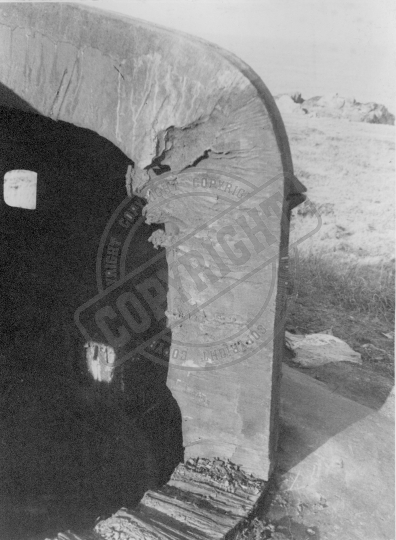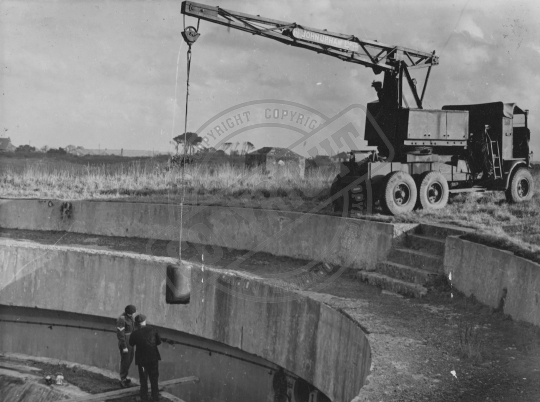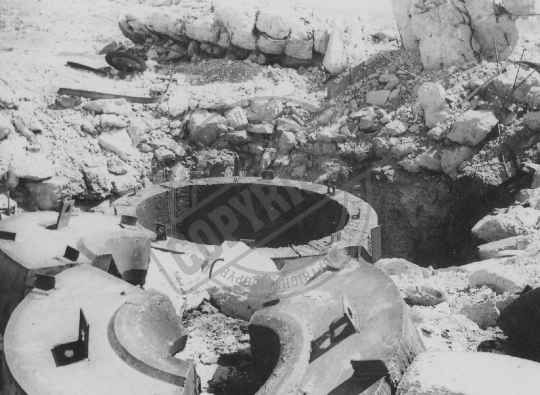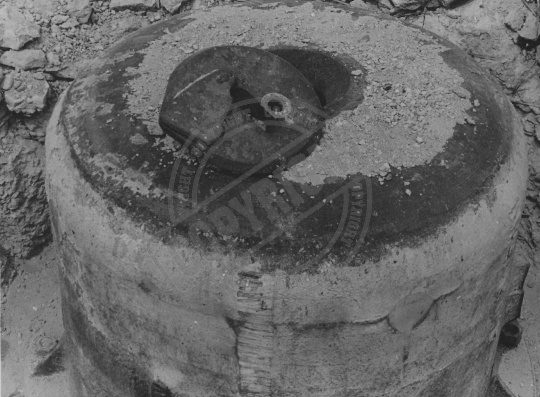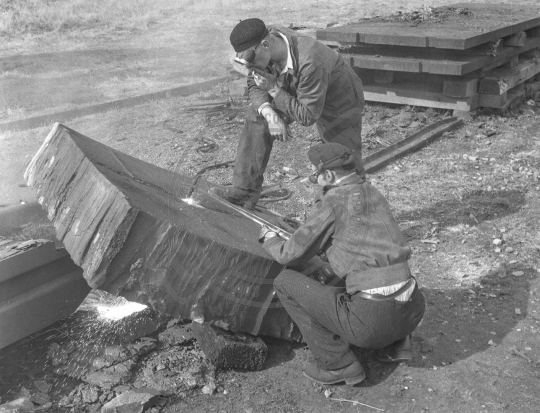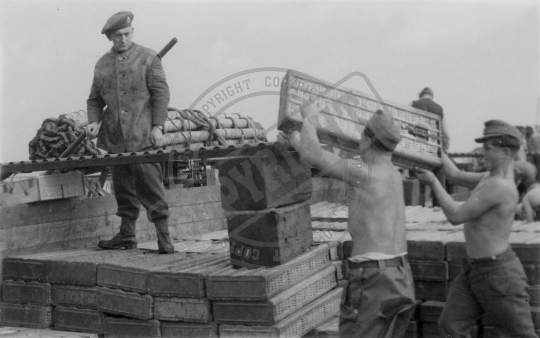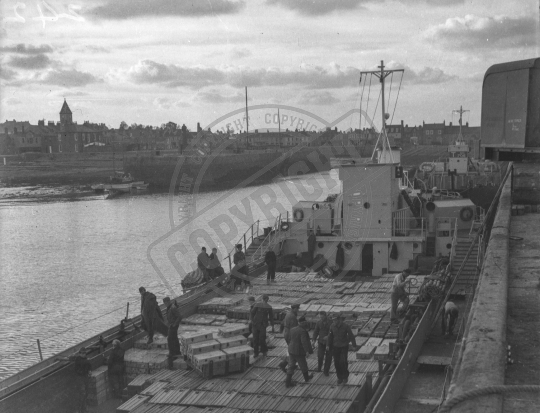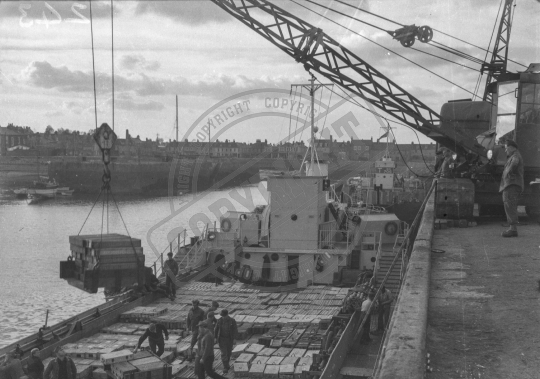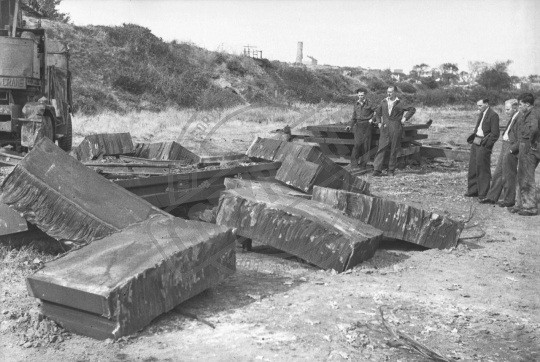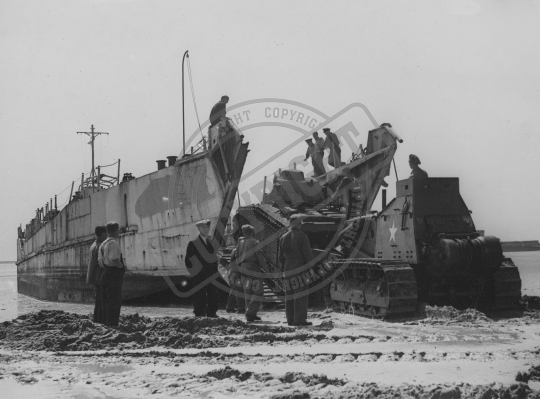Scrap Drive (13)
TPL_00370
A French Char B1-bis tank in one of the German chambers of the tunnel now converted into the Aquarium. These were captured tanks brought to the islands by the Germans as part of Panzer unit 216. The tank was photographed prior to its removal in 1952.
TPL_00367
The Germans installed a railway network to move food and materials around the island, these were used extensively during the construction of the fortifications. This derelict locomotive lies in St Sampson along Bulwer Avenue prior to being scrapped.
TPL_00366
The Germans installed a railway network to move food and materials around the island, these were used extensively during the construction of the fortifications. This derelict locomotive lies in St Sampson along Bulwer Avenue with various rolling stock prior to being scrapped.
TPL_00365
An armoured steel turret at Fort Doyle during the post war scrap metal drive, workers used gas axes and thermal lances to cut through the enormous steel sections.
TPL_00364
An ex-RAF Coles mobile crane lifts a depth charge found at Batterie Mirus by workers of John Upham during the scrap metal drive of the early 1950’s. The charge was originally thought to be a large grease drum used in the operation of the gun, camouflaging its true lethal purpose.
TPL_00363
The M19 armoured turret at Fort Hommet has been cut into manageable pieces ready for transport to the United Kingdom as scrap metal.
TPL_00362
The steel armoured turret of the M19 automatic mortar at Fort Hommet prior to the scrap men cutting it up and being made ready to be transported to the United Kingdom as scrap metal.
TPL_00361
Armour from German fortifications being cut up with a thermal lance at Les Monmains ready for transportation to the United Kingdom as scrap metal.
TPL_00360
As part of the post war clearance operations ammunition was loaded onto LCTs and dumped in the Hurd Deep. Here we see wicker baskets containing 8.8cm shells about to be thrown overboard by POWs.
TPL_00359
Shortly after Liberation the massive task of clearing ammunition began. The majority of the ammunition was loaded aboard LCTs by German PoW s and taken to the eastern end of Hurd Deep where the water is some 550 feet deep. This image shows the loading of ammunition at Northside, Vale.
TPL_00358
Shortly after Liberation the massive task of clearing ammunition began. The majority of the ammunition was loaded aboard LCTs by German POWs and taken to the eastern end of Hurd Deep where the water is some 550 feet deep. This image shows the loading of ammunition at Northside, Vale.
TPL_00309
Armour from German fortifications being cut up at Les Monmains for transportation to the United Kingdom as scrap metal. Note the Vale Mill and the railway embankment in the background.
OA_069
The last of the French Char B1 tanks is loaded onto a Landing Craft Tank (LCT), at La Haul Slip, St Aubin’s Bay, Jersey on the 17th May, 1946. These tanks had been captured by the Germans and formed Panzer Abteilung 213 that was stationed in the island. They were returned to France and the French Army.




